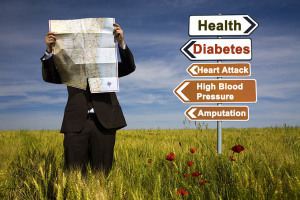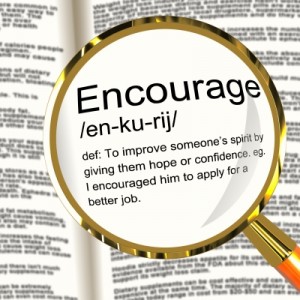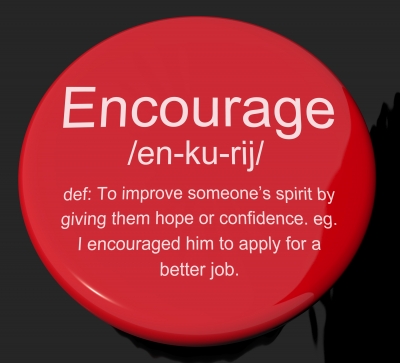Podcast: Play in new window | Download
 In today’s episode I share part of my story. Information, facts, and data are an important part of any plan. Testimonies of success are also important. I love information. Without it I would not be where I am today. I also need encouraging stories from real people.
In today’s episode I share part of my story. Information, facts, and data are an important part of any plan. Testimonies of success are also important. I love information. Without it I would not be where I am today. I also need encouraging stories from real people.
Today, I hope to encourage you along your journey by sharing the ups, downs, struggles and success I have encountered along the way.
In episode 1, I shared a little about the source of my lung damage and the beginnings of having diabetes. Today, I want to share the personal side of my journey. You will hear some of the “how” I have achieved my current success. But mostly I will share my experiences. The thinking behind my journey, as well as some of the struggles I faced.
In December of 2013 I experienced a heart attack. That got my attention.
A year and a half earlier, I read and followed Dr. Bernstein’s book, “Diabetes Solution”. He takes a high animal protein, very, very, low carb, medication and exercise approach. I experienced some success. My fasting blood sugars dropped from 130+ t0 around the upper 115+.
I lost about 20 lbs. over a few months—to about 165 lbs. But I was still not in the blood sugar range that Dr. Bernstein recommends—even with medication. Just as important, I was not feeling any better.
Fast forward a year: My weight was now about 175 lbs. I was still eating a moderately low carb diet and I still usually did not feel well.
On top of the diabetes, I was still experiencing many serious lung infections. Ugh! I was a bit down.
Despite following my doctor’s recommendations and staying away from sweets, I was still experiencing diabetic complications. My doctors told me I was doing well. They said my diabetes was “under good control”. And by the ADA standards, I was. But by the real world of my human body, it was not!
When my A1C (a way of measuring blood sugar over about a three month period) was 7.9 my VA doctor said, “I would not worry about it. If it was 8.0 then we would need to take more action. Besides, I have seen patients with much higher A1Cs.” [I will get into what the numbers mean in another episode.]
Of course he “wouldn’t worry about it”. It is not his foot, eye, heart, kidneys, that could suffer damage. What did he have to worry about? Nothing!
I, on the other hand, was the one experiencing neuropathy in my feet, atypical cataracts in my eyes and eventually, at the ripe old age of 44, a heart attack. Yes, what did he have to worry about? He had already been transferred. He had already moved on to “not worrying about” other patients diabetic complications.
So you can see that I was a bit frustrated. All the docs wanted to do was to keep adding medications. Not one of them told me that in a relatively short time I could be healthy. They all told me that I would keep getting worse. The best I could hope for was to slow the process a bit.
Well, enough was enough! Living this way was not very enjoyable. Feeling sick from the lung problem was bad enough. Throwing on top of that, fluctuating blood sugars and all of the side effects of the medication, that was too much.
Time to Try Again
I decided to try a different approach. The last approach, based on Dr. Bernstein’s book, focused on animal meat, cheese and other low carb animal products. So, I decided to go in a different direction. A moderately low carb, moderate protein, moderate fat (plant based) experiment.
On Valentine’s Day 2014 I decided to start making changes. I had been reading and studying, but I was not ready to go all in. So I started to make some cutbacks. These cutbacks lead to the first 5 steps outlined in episodes 2-5.
On February 14 my fasting blood glucose (FBG) was 149 mg/dl and I weighed 177 lbs. Over the next three weeks I started to eat healthier.
Here are my numbers during that time:
- FBG average 131 (range 116-154)
- Morning Blood Pressure 128/88
- Resting Heart Rate 79
These were my numbers on a restricted diet, with medications. My medications during that time were:
- Lantus [insulin] (blood sugar)
- Metformin (blood sugar)
- Micardis (blood pressure)
- Atorvastatin (Cholesterol)
- Clopidogrel [beta-blocker] blood pressure, heart rate
- Aspirin (blood thinner)
- Plavix (help prevent blood clots)
- Omeprazole (heart burn)
- Nitrostat [Nitroglycerin] for angina
For my respiratory problems:
- Combivent
- Albuterol
- Codeine (cough suppressant)
And on an as-needed (but regular) basis:
- Antibiotics
- Prednisone (steroid)
- Expectorants
- Over the counter decongestant
- Over the counter pain and fever reducers
- Polyethylene Glycol (a laxative to handle some of the side-effects of the combination of medications)
Can anyone say, “Wow!” That is a lot of medication.
On March 9, three weeks after beginning this journey, it was time to go all in. I did not know what to expect. Honestly, part of me did not want it to succeed. Why? Because it is easier to say, “There is nothing I can do. This is just the way it is. It is not my fault.”
It was Lent. There is a long tradition of fasting during this time of reflection and transformation. I did not know if I could make it all the way through Lent, eating clean and healthy.
I committed to a 7 day juice fast + 14 days of eating a plant based diet. At that point I would evaluate my progress and decide what to do next.
I had met with my doctors. The cardiologist, was like, “Why would you want to do this. These medications will keep you going…” Fortunately my primary care was more supportive.
What were my goals?
I started with a testable hypothesis: “A vegetable based diet free from refined grain and sugars will reverse my diabetes.” My basic standard for “reversing” diabetes would be to have laboratory numbers in the “normal” range. I kept detailed records of my resolutes.
It was important to me that this could be duplicated without expensive equipment, pills, potions, or powders. That included expensive supplements.
My major objective was health! It was not to lose weight. It was not to fit into some of my old clothes. Rather, I wanted to be healthy! Healthy would be defined as, exceeding medical standards listed in table 1 AND by how I felt!
| Marker | December 2013 Heart Attack | Before (March 2014) | Initial Target | Now (with no medication) |
| Fasting Blood Sugar average | 140s | 131 | Below 100 | 88 |
| A1C Blood Sugar Test | 7.1 | 6.4 | Below 5.7 | 5.2* |
| Total Cholesterol | 244 | 103*** | Below 200 | 137** |
| HDL | 35 | 35 | 40+ | 40** |
| Triglycerides (fat in blood) | 250+ | 121 | Below 150 | 119** |
| Waist Size (measured at the belly button | 43+ | 43+ | Below 40 | 32 |
| Weight | 175 lbs. | 177 lbs. | Below 155 lbs. | 130 lbs. |
* September 2014 (5.7 June 2014)
** June 2014 – three months w/o medication
*** Many consider this too low. This was due to the statin. Notice, even with the statin the HDL was not in an acceptable range.
What was I thinking?
All the science facts, stats and testimonies were still not enough to get me moving. I had to psych myself up for this. I had to convince myself that it was worth a try. I did not have a support group and I could not afford to go to a program. I could not afford expensive solutions. It had to be done within our current budget.
I asked myself, “If I had a treatable cancer that required a few months of uncomfortable sacrifice; but offer a high probability of success, would I take it? My answer was, yes! I convinced myself that the risk of failure from trying my new approach was worth the potential success.
Diabetes, high blood pressure, and all the other contributing factors to our top killers are serious. The good news is we can do something about them.
The 7 day Juice/Blended Vegetable Fast Begins
On Sunday, March 9 2014 I started a week long vegetable juice/blended smoothie fast. This was not a sweet fruit juice fast. Rather a juice or blended drink that consisted of cucumbers, celery, greens of many kinds, herbs, tomatoes, peppers and many, many other vegetables.
It was hard. At times it was horrible! Most of the time I felt like garbage. Some report feeling good after about 3 or 4 days. Not me! I had moments of feeling “ok”; but mostly I felt awful. After the first week, I began to start to occasionally have better days.
Not only did I feel bad, I smelled bad. My breath stank. You know it is bad when you are praying with people at Church, and they turn their head in another direction. They are trying to do it suddenly, but you know why.
The two weeks following the juice fast were also hard. But it was worth it!!!
I had to rely on the testimonies of those who had gone before me on this journey. I had to rely on the reported clinical experience of medical doctors that have helped them on their journeys. But for me, that was not enough. I had to rely on the scientific principles behind the concepts.
Living in a house with people eating all the things I used to eat did not make it easier. During my juice fast, my wife baked cookies. My family ate pizza and all the things that I also like. There was ice-cream in the freezer, Pringles and Oreo’s in the pantry. You get the picture.
After a week of the juice/blended drink fast, I started to eat whole, mostly raw, vegetables, nuts, seeds, beans, and progressively some low glycemic fruit.
I also started walking and progressively adding other light physical activities. See episodes 2-5 for details.
I Wanted to Quit
At times I wanted to quit. But my numbers were good. Really good! I had no excuse to quit. The changes had worked better than any combination of medication I had tried over the years.
Day 21 – from the beginning of the juice fast (March 29)
It had been almost three weeks without diabetes medication. My numbers were looking good.
- Fasting Blood Glucose = 93
- Blood Pressure = 100/80
- Resting Heart Rate = 86
- Weight = 162.5 lbs.
- Waist Size = 39 ¾
Not bad for 21 days! So I decided to continue. Besides, I was just starting to feel consistently better.
It was around this time that I watched the documentaries, “Fat, Sick and Nearly Dead”, “Forks over Knives” and “Food Inc.” for the first time. They each helped inspire me to keep going.
Day 40 (April 18)
By now I was starting to feel good much more of the time. At this point, I did not want to stop. I would still have some bad days. It seemed like I would be able to tell when I was burning fat, and as a result, releasing all those stored toxins back into my blood.
- Fasting Blood Glucose = 75 (note: It was not always this low, the average at this point was about 86)
- Blood Pressure = 110/75
- Resting Heart Rate = 65
- Weight = 155 lbs.
- Waist Size = 37 1/16
Day 60 (April 28)
- Fasting Blood Glucose = 82 (Five day average 83)
- Blood Pressure = 118/81
- Resting Heart Rate = 71
- Weight = 153 lbs.
- Waist Size = 35 ½ (on April 27)
Day 100 (June 17)
- Fasting Blood Glucose = 83
- Blood Pressure = 98/73
- Resting Heart Rate = 71
- Weight = 146.5lbs.
- Waist Size = 34 ¾ (below 35, for a man, is considered an important marker)
On July I, started a more formal exercise program – Power 90 by Tony Horton (Not P90x, but his older, easier program). It took me 100 days to complete the first half (level 1-2) of a 90 day program! Progress was slow. Who knows how long, or even if, I will complete level 3-4. Nevertheless, progress is progress!
Day 151 (August 7)
- Fasting Blood Glucose = 83
- Blood Pressure = 102/71
- Resting Heart Rate = 75
- Weight = 134 lbs.
Day 255 (November 19)
- Fasting Blood Glucose = 90
- Blood Pressure = 109/70
- Resting Heart Rate = 64 (The low 60’s is now normal. One morning it was 58!)
- Weight = 130 lbs. (November 18 and I have been around the same weight for about 10+ weeks)
- Waist Size = 32 1/8
Not only do these numbers look good – as well as the lab numbers mentioned above, but I feel great! Not just OK most of the time, but good almost all of the time and great some of the time.
Improved Respiratory Health
I still have lung problems with some coughing. The obstructive disease has not reversed. This seriously limits my physical capabilities and that is the reason it took 100 days to make it half way through a 90 day program.
The lost weight, decreased inflammation throughout my body, no infections, and increased muscle mass and strength, have all helped extend my physical capabilities by a little bit. Not much; but something is better than nothing.
No lung infections in nine months is a big deal! This is a record since Iraq 2006 when the problem started. Nearly every little cold would turn into a prolonged and nasty lung infection. Each would last for weeks and require a lot of medication. I would cough so hard that it caused a couple of small hernias.
The extra inflammation and mucus would, at times, bring my lung capacity down to around 10%. These times were scary for me and my family. The gurgling and wheezing, together with deep and prolonged coughs, produced disconcerting sounds.
Successfully dealing with my diabetes has increased my quality of life in many areas:
- Increased energy (a lot!)
- Clarity of mind
- Immune system strengthened
- Reduced lung infections (so far elliminated)
- Reduced all major Cardiovascular risk factors
- Increased confidence
How will defeating diabetes help transform your life?
Are you ready?
Are you ready to begin your journey to take your health to the next level? It may not be “easy”. But you can do it!
You do not have to do it alone. I am willing to walk with you through this journey. I am willing to share what worked for me. Working with your healthcare provider is key. It would be foolish to not coordinate your medication and nutrition plan with a healthcare professional. Each of us has unique considerations that need to be taken into account. Medication needs will change as you change your body. This needs to be coordinated and monitored professionally to ensure maximum safety.
I am not a doctor or other health professional. I am an ordinary guy that has wrestled with diabetes. What I have to offer is my experience, information and encouragement.
What worked for me, may not work the same way for you. Each of us is unique. Nevertheless, most of the concepts and principles are applicable to all who call themselves human.
Sign up for my free newsletter at RestoredLifeNow.com, listen to these podcasts, and let me know if you want to talk.
Let’s build a community around helping each other succeed!


